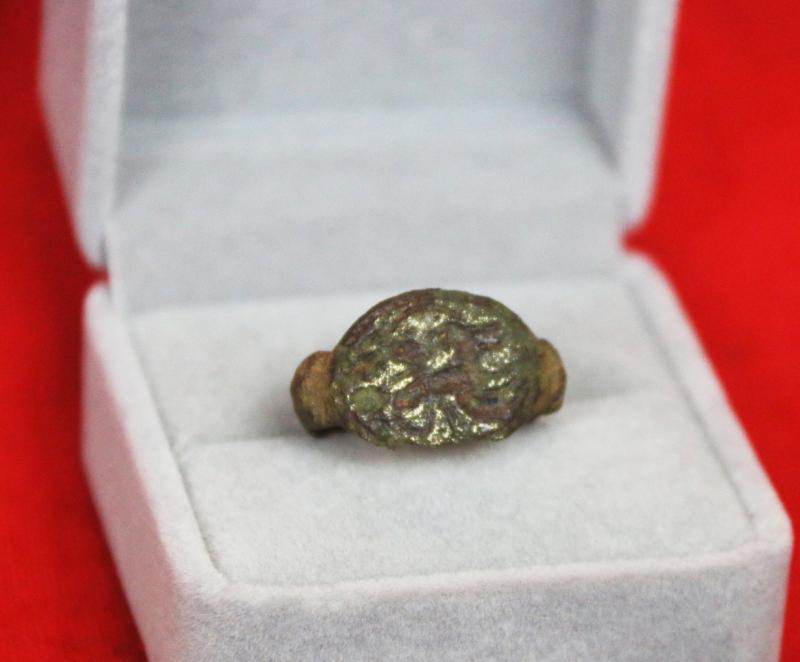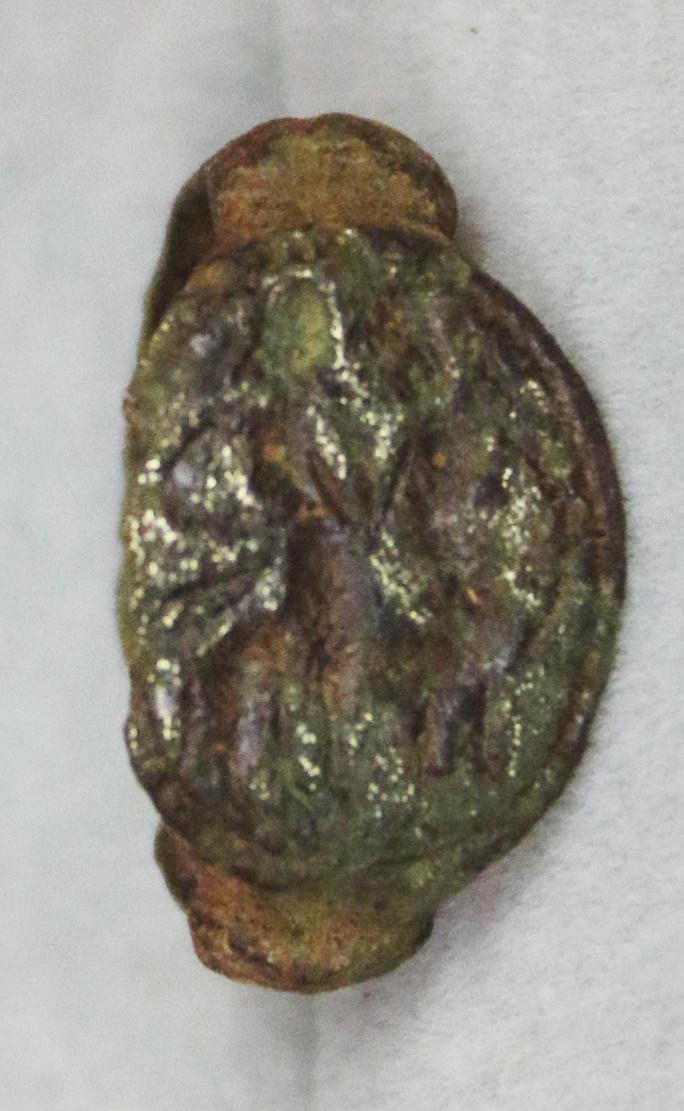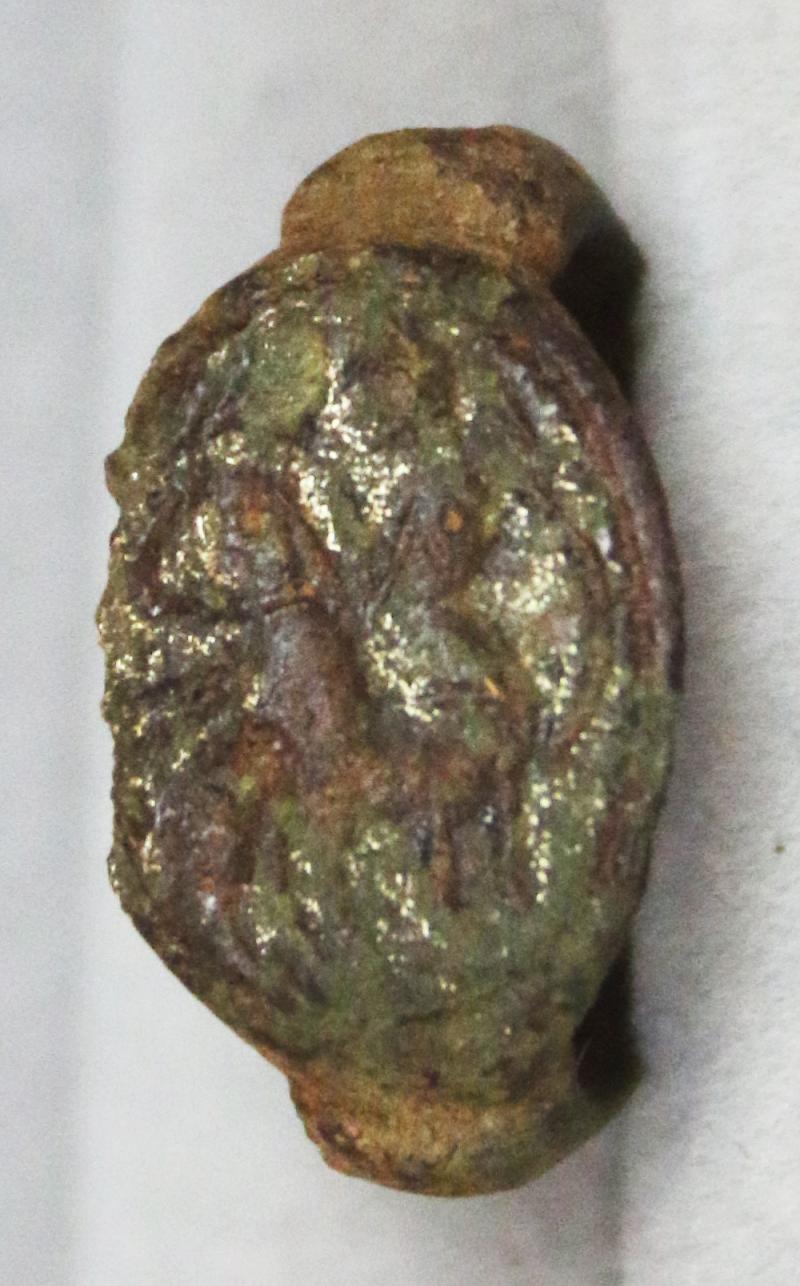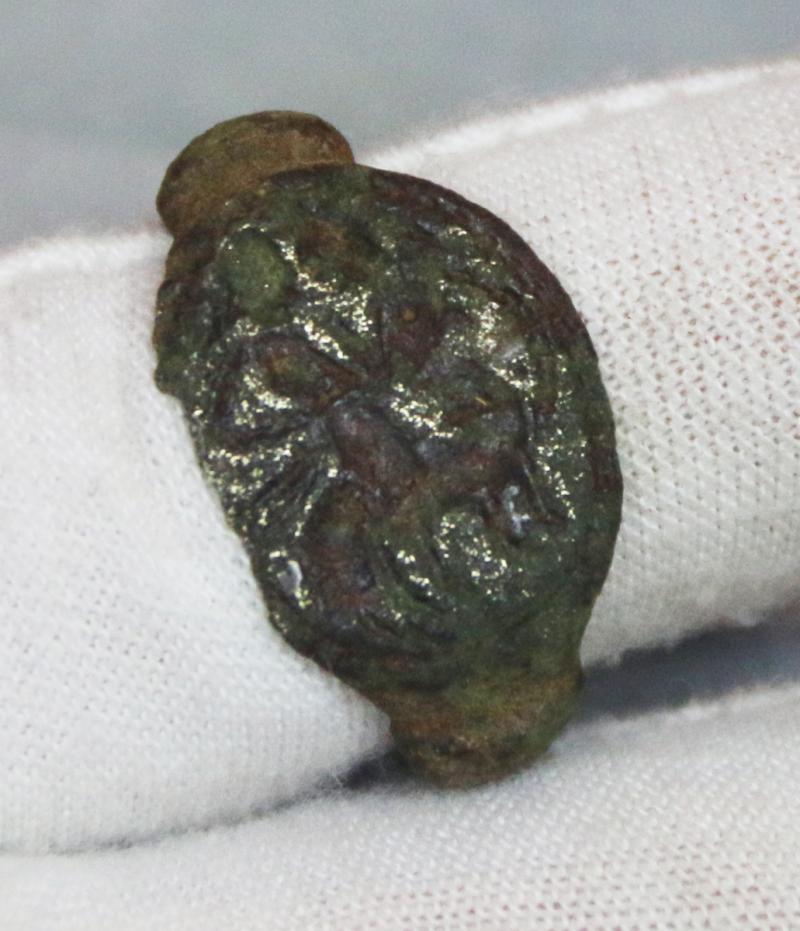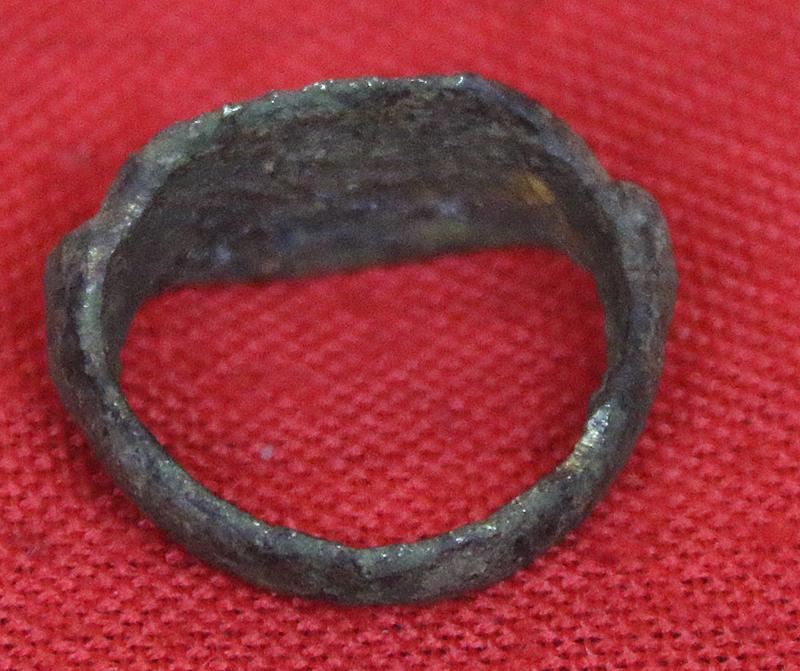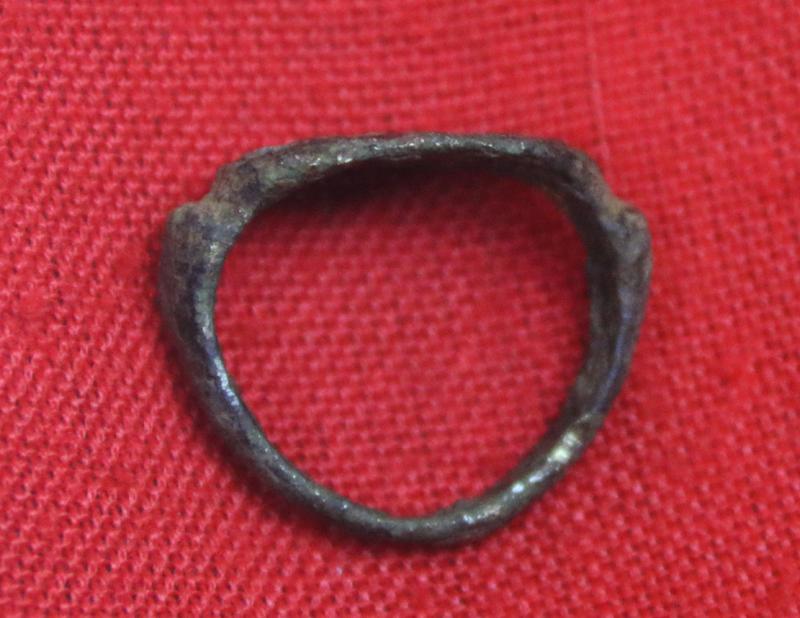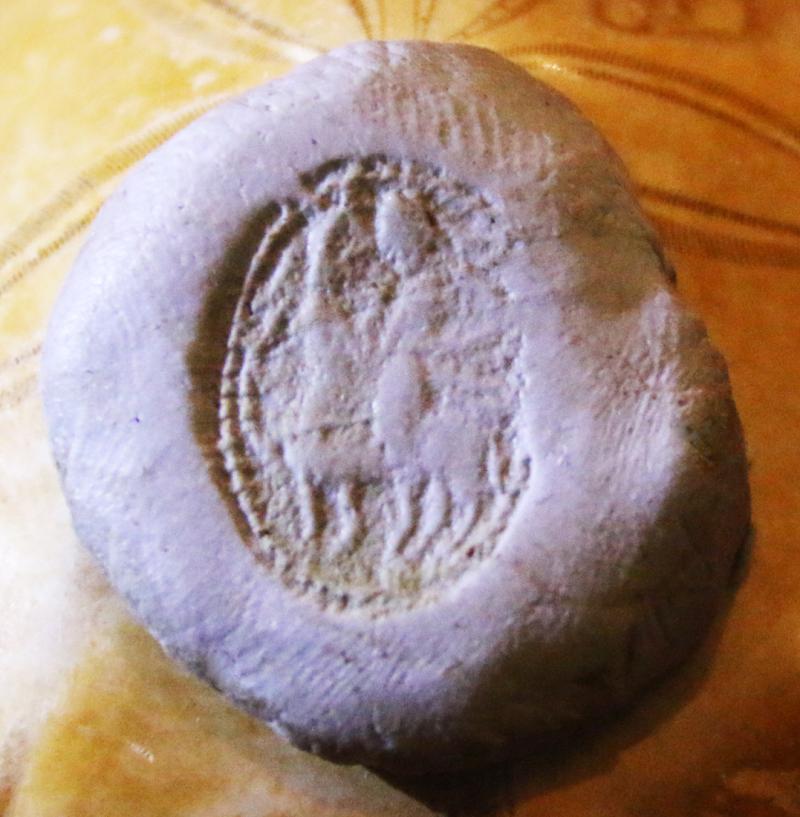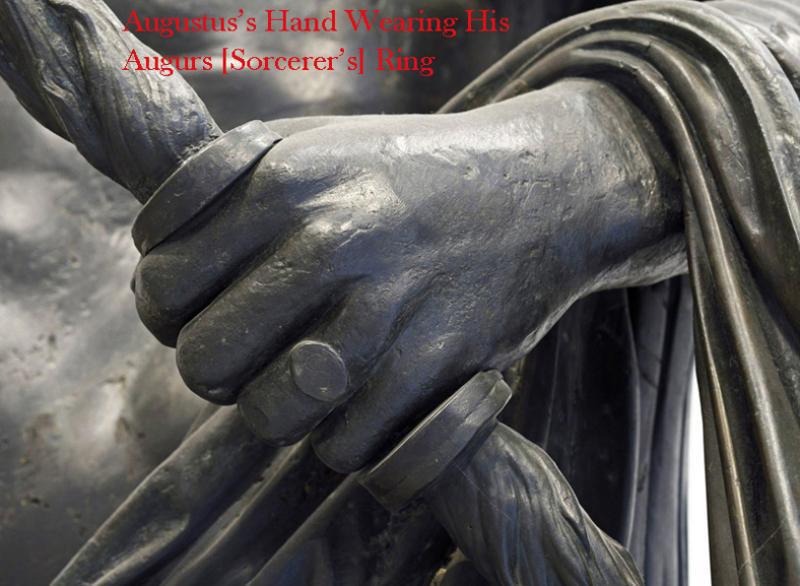Ancient Early Imperial 1st Century Roman Equestris Legionary's or Centurion's Ring Intaglio Engraved With A Mounted Roman Cavalry Officer
Henig type Xb bronze Roman ring around 1900 to 2000 years old. In copper bronze with great, heavy, natural excavated age patination. Beautifully carved intaglio seal detail of a mounted legionary. The detail is very good indeed in the realistic manner, however it can only be truly seen at its best once impressed in wax to see it inverted and reversed.
From a small collection of British recovered original Roman rings, all in excavated condition, found in the 19th century from the same location, Camulodunon (modern Colchester). Examples of this type can be found in Henig, M. (1974) A corpus of engraved gemstones from British Sites, British Archaeological Reports 8 (II): 90.
Wide oval bezel affixed to flattened shoulders engraved copper alloy, with good smooth surface and patina. Almost identical to one found in the UK, near Hadrian's Wall. The ring was important for displaying the Roman's status. For example Tiberius, who was after all left-handed according to Suetonius, thus displays a ring in his bronze portrait as the Pontifex Maximus:
The complete Roman Empire had around a 60 million population and a census more perfect than many parts of the world (to collect taxes, of course) but identification was still quite difficult and aggravated even more because there were a maximum of 17 men names and the women received the name of the family in feminine and a number (Prima for First, Secunda for Second…). A lot of people had the same exact name.
So the Roman proved the citizenship by inscribing themselves (or the slaves when they freed them) in the census, usually accompanied with two witnesses. Roman inscribed in the census were citizens and used an iron or bronze ring to prove it. With Augustus, those that could prove a wealth of more than 400,000 sesterces were part of a privileged class called Equites (knights) that came from the original nobles that could afford a horse. The Equites were middle-high class and wore a bronze or gold ring to prove it, with the famous Angusticlavia (a tunic with an expensive red-purple twin line). Senators (those with a wealth of more than 1,000,000 sesterces) also used the gold ring and the Laticlave, a broad band of purple in the tunic.
So the rings were very important to tell from a glimpse of eye if a traveller was a citizen, an equites or a senator, or legionary. People sealed and signed letters with the rings and its falsification could bring death.
The fugitive slaves didn’t have rings but iron collars with texts like “If found, return me to X” which also helped to recognise them. The domesticus slaves (the ones that lived in houses) didn’t wore the collar but sometimes were marked. A ring discovered 50 years ago is now believed to possibly be the ring of Pontius Pilate himself, and it was the same copper-bronze form ring as is this one, and in the same condition.
Code: 25138


